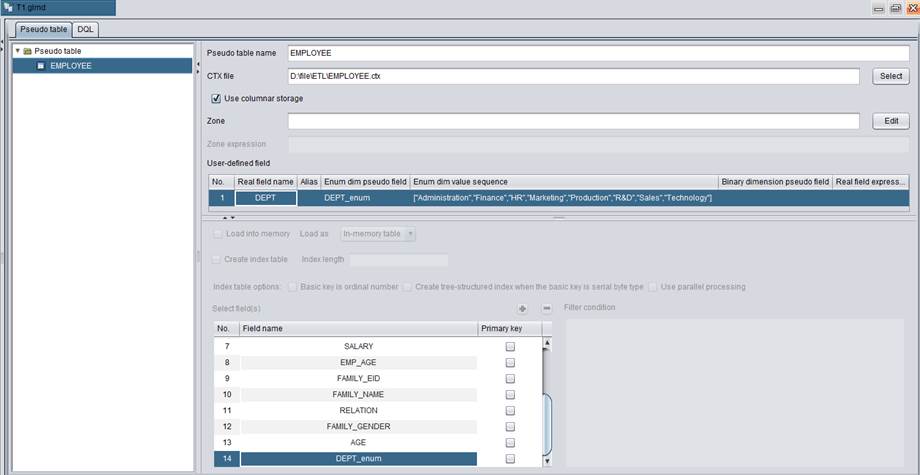Create Pseudo Table Definition
The functionalities explained in this section are only available in esProc Enterprise Edition. Just skip the following content if you do not use the Enterprise Edition.
With Create Pseudo Table Definition, you can directly define a source table of CTX format exported from the ETL tool as a pseudo table in the metadata file (.glmd). The newly generated result .glmd file can be directly open and edited in the metadata editor, simplifying the manual operation process. Below is how to use this functionality (take T1.etl as an example):
In T1.etl, click Tool -> Create Pseudo Table Definition, and name the pseudo table definition file T1.glmd and save it. Click OK and T1.glmd will be generated at the specified position. Meanwhile, the corresponding data files will be generated according to configurations exported from the ETL. Finally, four result files are generated:
T1.glmd
EMPLOYEE.ctx
EMPLOYEE_DEPT.btx
gender.btx
Open T1.glmd using the metadata editor. Below is the file’s content:

In ETL, if a source table is referenced in the exported configurations of another source table, this table is called referenced table. During the process of generating a pseudo table definition, two types of source tables will not be defined as pseudo tables. One is referenced tables, the other is non-CTX source tables. So the referenced table gender will not be defined as a pseudo table. The current .glmd file only has one pseudo table (EMPLOYEE).
In addition, the enumerated columns referenced in an ETL source table will be automatically converted to pseudo fields in the corresponding pseudo table. For example, EMPLOYEE table’s DEPT field references enumerated column EMPLOYEE_DEPT, and in the corresponding pseudo table it will be automatically converted to pseudo filed DEPT_enum.
Remember that when there is an unreferenced table and when the table is of non-CTX format, the system does not support generating pseudo table definition for it.